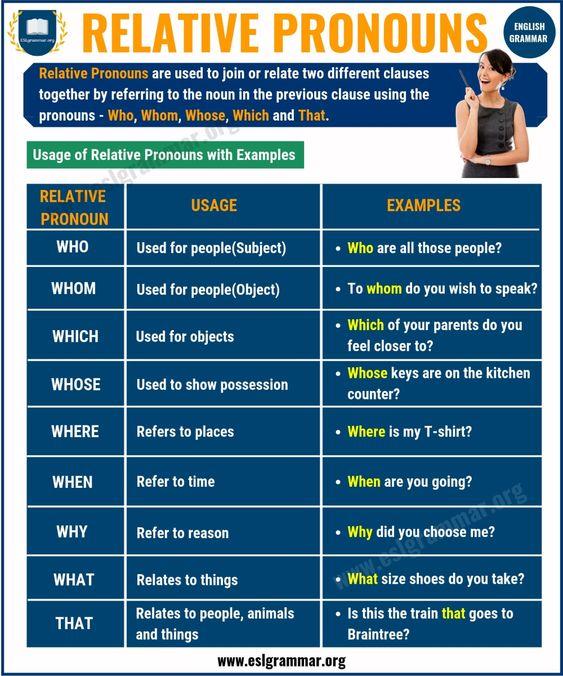So what exactly are relative pronouns? Let's take a look at relative pronoun definition, useful grammar rules with examples sentences and an ESL printable infographic below.

What is a Relative Pronoun?
A relative pronoun is used to join or relate two different clauses together by referring to the noun in the previous clause using the following pronouns: who, whom, whose, which and that.
Relative Pronouns Rules
"Which" and "that" are generally used for objects; while "who" and "whom" are used for people, and "whose" is used to show possession.
Let's take a look at some examples:
- She will choose the color which looks good on everyone.
In this example, "which" joins the two related clauses about choosing a color and a color which would look good on everyone.
- There is a car in the parking lot that someone has painted a bright pink.
In this case, "that" joins the two sentences related to the object and its location in the first and its appearance in the second.
- He needs to know by tomorrow who will be accompanying him on the business trip.
"Who" here stands for the unknown person and it also joins the two different clauses together.
- Is there anyone here whose cell phone has a signal?
"Whose" in the example above is used to ask if anyone has possession of something that the speaker needs.
Are you interested in teaching English as a foreign language?
Get your TEFL certification with ITTT.
Register now & get certified to teach english abroad!


